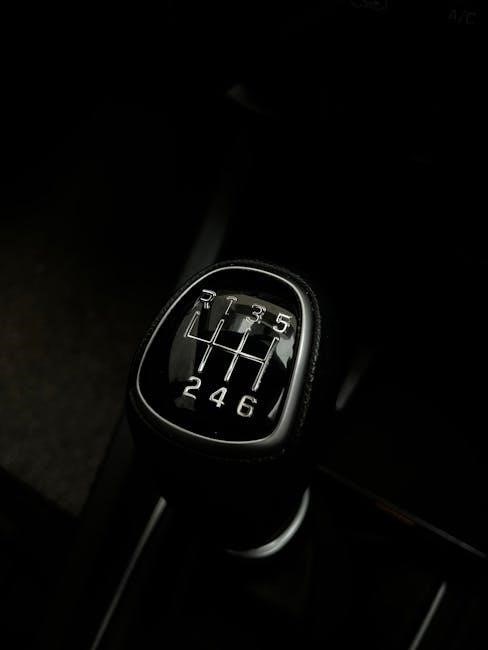Ford 3 speed manual transmission identification involves researching
and understanding various models and specifications to determine the correct type and application of the transmission, using resources such as shop manuals and online forums for accurate information and guidance always.
Overview of Ford 3 Speed Manual Transmissions
Ford 3 speed manual transmissions have been widely used in various vehicles, including cars and trucks, over the years, with different models and specifications available, such as the 2.77 and 3.03, which can be identified by the number of bolts on the top plate, with the 2.77 having 4 bolts and the 3.03 having a different configuration.

These transmissions have been popular among car enthusiasts due to their durability and performance, with many owners opting to repair and maintain their transmissions rather than replacing them, using resources such as shop manuals and online forums to guide them through the process, and to identify the correct parts and specifications for their particular transmission.
The Ford 3 speed manual transmission has a rich history, dating back to the early days of the automotive industry, with various models and designs being introduced over the years, each with its own unique characteristics and features, and with many still being used today in restored and modified vehicles, as well as in newer models, where they are valued for their simplicity and reliability.
Overall, the Ford 3 speed manual transmission is an important part of the company’s heritage, and continues to be popular among car enthusiasts and restorers, who appreciate its durability, performance, and nostalgic value, and who are willing to invest time and effort into repairing and maintaining these transmissions to keep them running smoothly and efficiently.

Types of Ford 3 Speed Manual Transmissions
Ford produced several types of 3 speed manual transmissions, including toploader and non-toploader models, with different gear ratios and applications, such as the 2.77 and 3.03, for various vehicles, including cars and trucks, always requiring identification.
Differences Between Car and Truck Transmissions
The differences between car and truck transmissions are significant, with various factors to consider when identifying and working with Ford 3 speed manual transmissions. One key difference is the gear ratio, with truck transmissions often having heavier-duty components and different gearing to handle the increased weight and stress of truck applications. Additionally, the transmission mounts, crossmembers, and other hardware may vary between car and truck transmissions, requiring careful consideration when swapping or replacing transmissions.
According to online forums and repair manuals, the 2.77 and 3.03 Ford transmissions are commonly found in cars, while trucks often have heavier-duty transmissions with different gear ratios and components. The toploader transmission, for example, is often associated with cars, but can also be found in some truck applications. Understanding these differences is crucial when working with Ford 3 speed manual transmissions, as incorrect identification or installation can lead to premature wear, damage, or even failure of the transmission.
By consulting shop manuals, online forums, and other resources, enthusiasts and mechanics can gain a deeper understanding of the differences between car and truck transmissions, and make informed decisions when working with Ford 3 speed manual transmissions. Whether rebuilding, replacing, or swapping transmissions, careful attention to detail and a thorough understanding of the transmission’s specifications and applications are essential for ensuring proper function and longevity.

Identification of Ford 3 Speed Manual Transmissions
Identification involves examining the transmission’s case, gears, and other components to determine the correct type and model, using online resources and shop manuals for accurate information and guidance on Ford 3 speed manual transmissions always available.
Using the Shop Manual for Identification
The shop manual is a valuable resource for identifying Ford 3 speed manual transmissions, providing detailed information on the various models and their specifications. By consulting the shop manual, individuals can determine the correct type and application of the transmission, as well as identify any unique characteristics or features. The manual typically includes diagrams, charts, and tables that illustrate the different components and their relationships, making it easier to understand and identify the transmission. Additionally, the shop manual often includes a parts catalog, which can be used to order replacement parts or verify the authenticity of a transmission. Overall, the shop manual is an essential tool for anyone working with Ford 3 speed manual transmissions, and can help ensure accurate identification and proper maintenance. Furthermore, the manual can be used in conjunction with online resources and other reference materials to provide a comprehensive understanding of the transmission and its operation. With the shop manual, individuals can confidently identify and work with Ford 3 speed manual transmissions, and make informed decisions about repairs, maintenance, and upgrades. The shop manual is a critical component of any transmission identification process, and is widely available from online retailers and automotive parts suppliers.
Visual Identification of Ford 3 Speed Manual Transmissions

Visual identification of Ford 3 speed manual transmissions involves examining the physical characteristics of the transmission to determine its type and model. This can be done by looking for distinctive features such as the shape and size of the transmission case, the location and type of mounting points, and the configuration of the gearshift and linkage. The top loader transmission, for example, has a distinctive top plate with a specific bolt pattern, while the 3-speed transmission has a unique gear ratio and synchromesh design. By visually inspecting the transmission, individuals can narrow down the possible models and determine the correct identification. Online resources, such as forums and websites, can provide detailed photographs and descriptions of the different transmission models, making it easier to compare and identify the transmission. Additionally, the transmission’s serial number and casting numbers can be used to verify its identity and determine its production date and application. Overall, visual identification is an important step in the process of identifying Ford 3 speed manual transmissions, and can be used in conjunction with other methods, such as consulting shop manuals and online resources, to ensure accurate identification. The process requires attention to detail and a thorough understanding of the transmission’s design and features.




